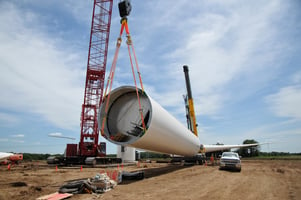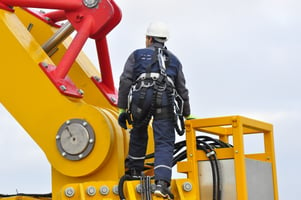In lifting technology and load securing, precise planning and perfect execution are crucial. Axzion...
Optimal Load Handling Solutions with Axzion: Precision Planning and Specialization
Precision planning and flawless execution are crucial in the field of lifting technology and load securing. When it comes to tailored solutions, Axzion emerges as the perfect partner for companies seeking excellence. With extensive expertise and an unwavering commitment to quality, Axzion ensures that every challenge is met head-on. Discover why Axzion stands out as the ultimate choice for your lifting requirements.
Optimal Load Handling Equipment Through Specialization
At Axzion, more than 20 experienced load handling equipment designers specialize in statics, welding, and drive technology to develop optimal solutions tailored to your needs. Lifelong learning and continuous education are highly valued at Axzion. All employees undergo regular training and professional development. Specialists from DEKRA, TÜV, professional associations, and renowned suppliers ensure that new standards are immediately implemented. Additionally, new knowledge is shared internally through training sessions where experienced developers pass on their expertise to new employees.
Our development teams work with state-of-the-art IT and the latest software. Designs are created in 3D using SolidWorks and verified with integrated FEM software. Static calculations are performed using Mathcad or RSTAB.
The Importance of Load Cycles
The number of load cycles is crucial. The designer of a load handling device must collaborate with the user to determine whether DIN EN 13155 "Cranes – Safety – Loose Load Handling Attachments" can be applied or if the device must be designed according to Eurocode 3-DIN EN 1993 "Design, Construction, and Execution of Steel Structures." Correct design requires projecting the intensity of use, considering factors such as planned service life, operational years, lifting operations per day, and load cycles per lifting operation.
Up to 16,000 Load Cycles
For load handling devices designed for up to 16,000 load cycles, DIN EN 13155 is fully applied. This means that mechanical load-bearing parts must meet specific strength requirements, including withstanding a static load of three times the capacity with possible permanent deformations and a static load of twice the capacity without permanent deformations. Individually designed products require both type and individual testing. For serial products, type testing must be conducted on representative samples, and individual testing on each manufactured product. Welding must be performed by personnel certified according to DIN EN ISO 9606-1, and weld quality must meet DIN EN ISO 5817 standards.
Operating Temperatures
Operating temperatures must be considered during design. Standard load handling devices operate within a temperature range of 0 °C to +80 °C. For outdoor use, temperatures can reach -20 °C and, in some regions, up to -40 °C, requiring the use of cold-resistant steels. When transporting hot loads, special steels suitable for high operating temperatures must be selected.
Lifting Speed
Load handling devices must be designed for the lifting speeds encountered, typically up to 10 m/sec. In handling operations such as ports or steel mills, significantly higher speeds may be required and must be considered during design.
Special Operating Conditions
Not all load handling devices are used with a crane. For example, when used with forklifts, dynamic loads are higher, and lifting speeds are greater. These conditions must be accounted for in the design.
Offshore Requirements
The demands on load handling devices are particularly high in offshore applications. Wind and wave forces can be enormous, and the devices must be easy to operate and extremely safe. Axzion ensures that the right load handling device is designed for your specific requirements.
Conclusion
Axzion offers comprehensive solutions from planning and development to production and service. With our specialized expertise and commitment to the highest quality, we are the ideal partner for all your lifting and load securing needs.


